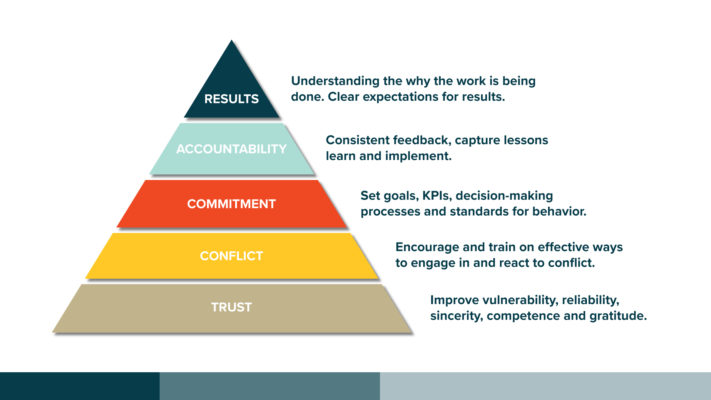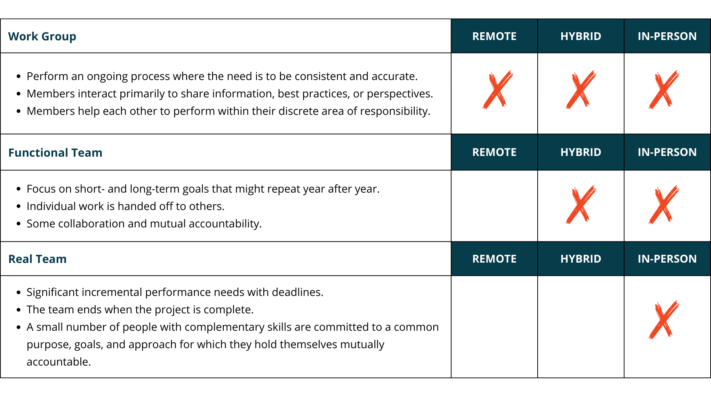Many companies deployed remote teams to survive during the pandemic but, as restrictions lifted, a significant portion switched to a hybrid model. This created a new challenge for leaders. After all, leading an in-person team was difficult before the pandemic; leading three separate ones during and after the pandemic was downright overwhelming. As usual, though, the struggle helped us all grow. Through this time, we learned valuable lessons about how to effectively lead remote, hybrid, and in-person teams – and the different approaches required for each.
What COVID Taught Us About Leading Any Team
- Align each part of the organization to the purpose.
Employees from any team want to feel they are contributing to something larger than themselves. This means that leaders must spend extra effort helping remote and hybrid employees see how their actions impact the company and, in turn, its customers. The further away employees are from the warmth of the mission, the higher the chance they will feel the cold effects of isolation. Here’s more guidance around creating organizational alignment, to get you started. - Commitment and Accountability.
A common complaint of remote, hybrid and in-person employees is confusion around who is responsible for what, how decisions are made and why people don’t act by the company values. Even if those commitments are clear and agreed upon, there’s often a concern about accountability and follow-through. Employees from all types of teams should participate in and fully understand expectations, roles, responsibilities, decision-making and how to hold others accountable by giving and receiving effective feedback. - Trust and healthy conflict are the foundation of teamwork.
Over the last three years, many employees worked from home and enjoyed spending time with family and saving money by not commuting. They also had more distance from bosses they didn’t like and peers they didn’t respect. At least part of the time, getting back together in person means that conflict and personality clashes might get stirred up again. Just remember that’s not always a bad thing.Trust and the ability to engage in healthy conflict are the foundations for a learning culture and engaging employees around a compelling vision, goals and processes. See the chart below showing Patrick Lencioni’s Five Dysfunctions of a Team model. Notice how it applies to remote, hybrid, and in-person teams.

- The structure of a team indicates the results it achieves.
Most companies develop teams based on the function of a department or the titles of employees. A lack of clarity around roles, responsibilities, scope and decision-making became even worse during the pandemic as well as after, when employees were remote, hybrid and in-person.Jon Katzenbach introduced timeliness solutions in his book, The Wisdom of Teams, long before the pandemic. His working-backward approach says teams should be formed based on the results they need to achieve, not on functions or titles. When you overlay his model on the work being done by remote, hybrid, and in-person employees, you see that some teams should be in-person based on the performance results they need to achieve, while others can be remote or hybrid.

Takeaways
The long and short of what we learned during the pandemic is that we can adapt to the changing tides of our work models, but it requires intentionality. Here are the top keys to keep in mind as you lead teams of different shapes, sizes and locations:
- Leaders must apply different approaches to each type of team.
- Leaders must spend extra effort helping remote and hybrid employees see how their actions impact the company and, in turn, its customers.
- Employees from all types of teams should participate in and fully understand expectations, roles, responsibilities, decision-making and how to hold others accountable by giving and receiving effective feedback.
- The structure of a team indicates the results it achieves.
Stay tuned for our next post, in which we’ll cover the skills needed to successfully lead these teams. Interested in learning more about leadership, and exploring coaching opportunities? Fill out this quick form to get in touch.

